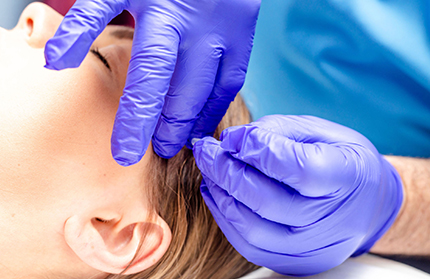Experiencing a headache can have a major impact on your daily routine and can also negatively affect one’s performance, especially if they become chronic headaches.
Although most people turn to over the counter medication to relieve the pain and fatigue associated with a minor or primary headache, others have had to take deeper measures to find solutions that will allow them to live a painless lifestyle.
There are numerous reasons why people experience frequent headaches, but to obtain an adequate understanding of the issue, it is crucial for patience to seek the assistance of a physical therapist who can aid in detecting the underlying problem and determining whether physical therapy can help.
Can physical therapy treat your migraine?
People who suffer severe migraines generally are aware that cures can often be difficult to accomplish, especially if a patient has experienced a history of chronic migraines.
To determine whether physical therapy will benefit a patient, physical therapists make therapy decisions based on the symptoms associated with a chronic migraine or headache.
For many years, physical therapy techniques have benefited individuals whose chronic pain is accompanied by a discomfort anywhere in the muscles or joints. For this reason, migraine sufferers who complain of shoulder or neck tension experience a decrease in pain after receiving therapy.
Most therapist will suggest stretching exercises or modalities that can reduce the discomfort such as applying ice packs, or implement massages that can relax the muscles and increase circulation.
For this reason, it is important to monitor all the symptoms associated with one’s chronic discomfort so that you can take the necessary measures that can help strengthen your quality of life.
Can pain in the neck or jaw be the cause of a migraine?
Musculoskeletal problems can be associated with migraine discomfort mainly because of the muscles and joints that refer pain into the head.
To more clearly understand why pain or injuries in our neck or jaw can trigger a migraine, people consider other facts with similar concepts.
A person who suffers a heart attack for example, not only encounters physical pain in the chest. In fact, there are other elements that can signal a heart attack. These signals can be a pain in both the left arm or shoulder.
Most people may wonder why there is physical discomfort in the left arm or shoulder during a heart attack or stroke, but it occurs because the nerves of the arm and heart travel together to send messages to the brain.
Muscles and joints of the neck function in the same manner and can play a role in one’s chronic migraines.
Through referred pain, physical therapists can find solutions by implementing therapy techniques. Applying light pressure or manipulation can help a physical therapist identify where the pain is coming from, which in turn aids in diminishing or reducing the severity of a migraine.
What to expect when visiting a physical therapist?
A visit to a physical therapy office begins like at any other medical facility. Physical therapists ensure to initiate by asking the patient questions that will allow them to evaluate the reason of the headache.
The physical therapist will also examine the patients posture and take the necessary tests that will help reveal the underlying problem.
Like any other doctor would, if the evaluation stipulates that a patient’s chronic migraines are not associated with stress or tension, then it is the doctor’s responsibility to refer the patient to a medical practitioner that will determine the cause.
However, if the evaluation determines that the patient has symptoms that can benefit from physical therapy, then your physical therapist will discuss options that will meet your needs so that you can begin the healing process right away.
Physical therapy can change your current health status
Physical therapy improves the quality of one’s life because patients are exposed to techniques that are guaranteed to change a patient’s physical health for good.
Not only do patients restore their mobility and experience a significant decrease in pain, but they also increase their strength.
Through therapeutic exercises, physical modalities, and physiotherapy you do not have to place your life on hold. Get the medical attention that will enhance your way of living through physical therapy.

